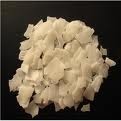Wheat and barley are early plants to be cultivated and primitive people living as early as 5000 BC. Bread was discovered by adding water to the grain made it more palatable and people experimented with cooking the grain and water mixture on stones that had been heated in fire. In ancient Egyptians, wheat and water mixture was left in warm place, causing the naturally occuring yeast to produce a puffed up dough. In the Roman, rubbing between two stones which one stone revolved on top of a lower, perpendicular and stationary stone. The wheel were drived by cattle or slaves. Later water mills or wind mills provided the power. In 18th century, Swiss Miller invented a steel roller mechanism that simplify the grinding process and led to the mass production of white flour. Charles Fleischmann's develop an easy to used dependable package yeast later further simplify the baking process. In 20th century, scientific and technical innovation have made it possible for large bread factory to control the complex physical, chemical and biological changes inherent in bread making. In fact bread is an excellent source of low fat complex carbohydrates.
Raw materials of bread and its function
1.Wheat flour- basic ingredient in bread making where on hydration during mixing of wheat flour forms glutanin and glytin are produced. Gluten has property of extensibility and elasticity and is capable of forming thin film which helps in retaining the gas produced by yeast in dought.
2. Baker's yeast - Pure culture of selected strains of Sacromyces Cerevisiae are mixed with the bread dought to bring about desired changes in texture and flavor
3. Salt - Sodium chloride,NaCl important to improve the the flavor and taste of bread. Besides it also exerts desirable strong thinning effect on the glutn of the dought.
4. Sugar - refer to sucrose. Once sucrose added in the dought it will inverted to glucose and fructose immediately
5. Fat - Give effect on the loaf volume. Bread crumb texture becomes softer and improving quality of bread
 |
| glyserol Mono Stearate |
6. Glycerol Mono Stearate - act as emulsifying agent where results in increase in loaf volumes tenderness in crust but the addition of this emulsifying agent must be limited if not it will causes an open crumb structures
 |
| Potassium bromide |
7. Potassium Bromide - used as an oxidizing agent. At the mixing stage when potassium bromide is added, the dough become more elastic, tighter and less sticky. Usually it will give superior oven spring and good loaf volume with better crumb texture.
8. Calcium Propionate - Act as preservative for bread which exhibit effect on undesirable mould
9. Acetic acid - Used to reduce the spoilage of bread by ropiness
10. Vitamin Premix - mainly its added during bread making mainly to profit the bread with essential vitamin and minerals for making general health of the consumers. The vitamin premix contains Vitamin A, B1 and B2, Niacin and Iron.
BreAd MaKinG pRoceSS
Yeast grown in a molasses mineral salts medium with pH 4.3 - $.5 and temperature control to 30C with molasses substrate added to maintain a sugar concentration 0.5 - 1.5 percent.Yeast then collected by centrifugation and pressed through a filter to remove excess liquid. Amylases in the dough convert starch to sugars and carbon dioxide and ethanol.
In the production of bread, besides Saccharomyces cerevisiae, other microorganisms can be used as leavening of bread are coliform bacteria and Clostridium sp. During fermentation the dough becomes conditioned as a result of the action of proteases on the flour protein, gluten. Enzymes are produced by the yeast or maybe added from the sources. As a result of this conditioning the gluten matures become elastic and capable of retaining the carbon dioxide gas produced by the yeast during fermentation.
Sugar amylase to convert starches to sugar is normally added to the flour in order to increase the rate of gas production by yeast. Addition of increased amounts of yeast and various salts to support yeast metabolism also increases the rate of gas production.
The leavening process is normally carried out at 27C which is optimal for fermentation. Too high or too low a temperature can result in reduced rates of gas production. After leavening the bread is baked. Carbon dioxide bubbles are trapped in the dough and give rise to the honeycomb texture and increased volume of the bread. Although the interior of the bread does not reach 100C, the heating is sufficient to kill yeast inactivate their enzymes expand, the gas evaporate, the ethanol produced during the fermentation and establish the structure of the bread loaf.



Tiada ulasan:
Catat Ulasan